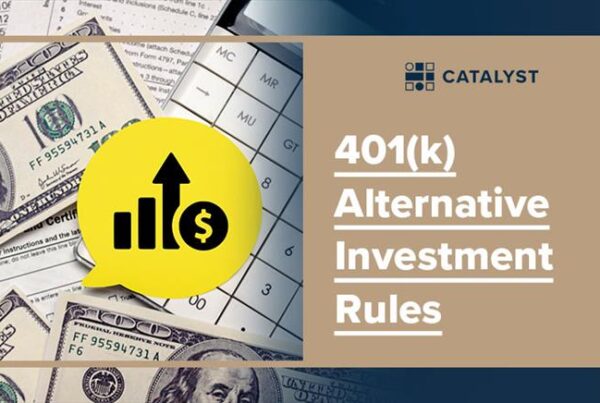May 16, 2023 | 5 min read
Multifamily Real Estate Market: Trends & Predictions for Q3 & Q4 of 2023
Introduction
The multifamily real estate market, like many sectors of the economy, is dynamic and subject to various external influences, such as economic trends, demographic shifts, and changes in consumer behavior. In 2023, the market is expected to experience several key trends, driven by a host of factors, including persistent inflation pressures, a projected moderate recession, and a national housing shortage.
Demand and Rental Growth
In 2022, demand for multifamily rental units was robust, but the trend shifted towards the end of the year, with demand plummeting during the fourth quarter. This drop was largely due to inflation pressures, diminished savings levels of many households, and ongoing recession expectations. Indeed, a moderate recession is projected for the first half of 2023, which is expected to suppress rental demand and keep rent growth lower than usual for the year. However, due to elevated mortgage rates and the overall national shortage of housing, many renters are expected to continue renting, keeping multifamily fundamentals subdued but somewhat stable over the second half of the year1.
National rent growth turned negative at the end of 2022, but it is predicted to turn slightly positive to 1.5 percent by year-end 2023. Despite this slowdown, the overall rent growth for 2022 was positive, ending the year at an estimated 4.75 percent, down from 10 percent in 20212.
Vacancy Rates
The national multifamily vacancy rate is expected to slowly rise in 2023, from an estimated 5.5 percent as of the fourth quarter of 2022, to an estimated 6.0 percent by year-end 2023. This increase in the vacancy rate is primarily due to the amount of new supply expected to be completed over the next 12 to 18 months. It is important to note that the predicted rise to 6.0 percent is a return to the vacancy peak of 6.0 percent that occurred in the first quarter of 2021, and is only slightly above the long-term average of 5.8 percent from 2005 through 20223.
Concessions and Rent Growth
As effective rent growth experienced easing later in 2022, the industry saw a rise in the number of properties offering concessions. As of the fourth quarter of 2022, an estimated 12.9 percent of class A and 9.5 percent of class C properties were offering concessions. While concession levels fell slightly during the year and remained below one month’s free rent on average, they continue to be above recent trends. It is expected that both the value of concessions and the number of properties offering them will be on the rise in 20234.
New Supply and Construction Delays
According to preliminary data, more than 469,000 apartment units were completed in 2022, a significant increase from 2021’s 396,000 units and 2020’s 404,000 units. Nearly 783,000 units are slated for completion in 2023, but it is unlikely that all those units will be completed by year-end5.
As of December 2022, 84 percent of survey respondents reported experiencing construction delays, which was the lowest level of the year and continued a declining trend from the second quarter. Delays in permitting and starts also eased as the year went on. Labor and material shortages, which were a significant concern in 2021, both saw availability improvement in 2022. Despite these improvements, a potential recession could impact the level of new units completed in 2023.
Supply/Demand Imbalance
At a national level, a supply/demand imbalance is expected in 2023, with new multifamily units expected to come online surpassing anticipated increases in job growth. The anticipated economic recession and the expectation of higher unemployment are unlikely to produce enough demand to keep up with the wave of new deliveries. Year-over-year job growth is expected to be -1.1 percent by the end of 2023, resulting in an estimated loss of 2.0 million jobs. This means that multifamily rental demand would be weak, just as more than 783,000 new units are expected to hit the market1.
Trends Across Different Classes of Multifamily Units
Demand for all classes of multifamily units remained strong in early 2022 but began to ease later in the year. As of the fourth quarter of 2022, year-over-year effective rent growth for stabilized class A and B units was still a remarkable 8.5 percent and 9.0 percent, respectively. However, both classes saw double-digit annual growth in the prior three quarters of the year. Effective rent growth for stabilized class C remained high throughout the year, and class C ended the year with the highest effective rent growth at 12.4 percent. The slowing in rent growth across all classes later in the year was due to slightly diminishing demand as the national economy eased, and a general easing in market conditions after several consecutive quarters of unsustainable rent growth2.
Conclusion
The multifamily real estate market in 2023 is set to face several challenges, including a projected recession, a rise in vacancy rates, and an imbalance between supply and demand. However, despite these challenges, the market also presents opportunities. The high levels of new supply and the rising number of properties offering concessions could potentially provide renters with more choices and better deals. The dynamic nature of the market necessitates constant vigilance and adaptability from investors, property managers, and other stakeholders. Understanding these trends and adapting strategies accordingly will be key to navigating the multifamily real estate market in 2023 and beyond.
While there is still much uncertainty in the market, one thing is clear: the multifamily real estate market is resilient. Despite facing headwinds, it continues to present opportunities for those who understand its dynamics and are prepared to adapt to changing conditions. As we move through 2023, it will be interesting to see how these predictions play out and how the multifamily real estate market continues to evolve.
Join Us
Subscribe to our newsletter.



